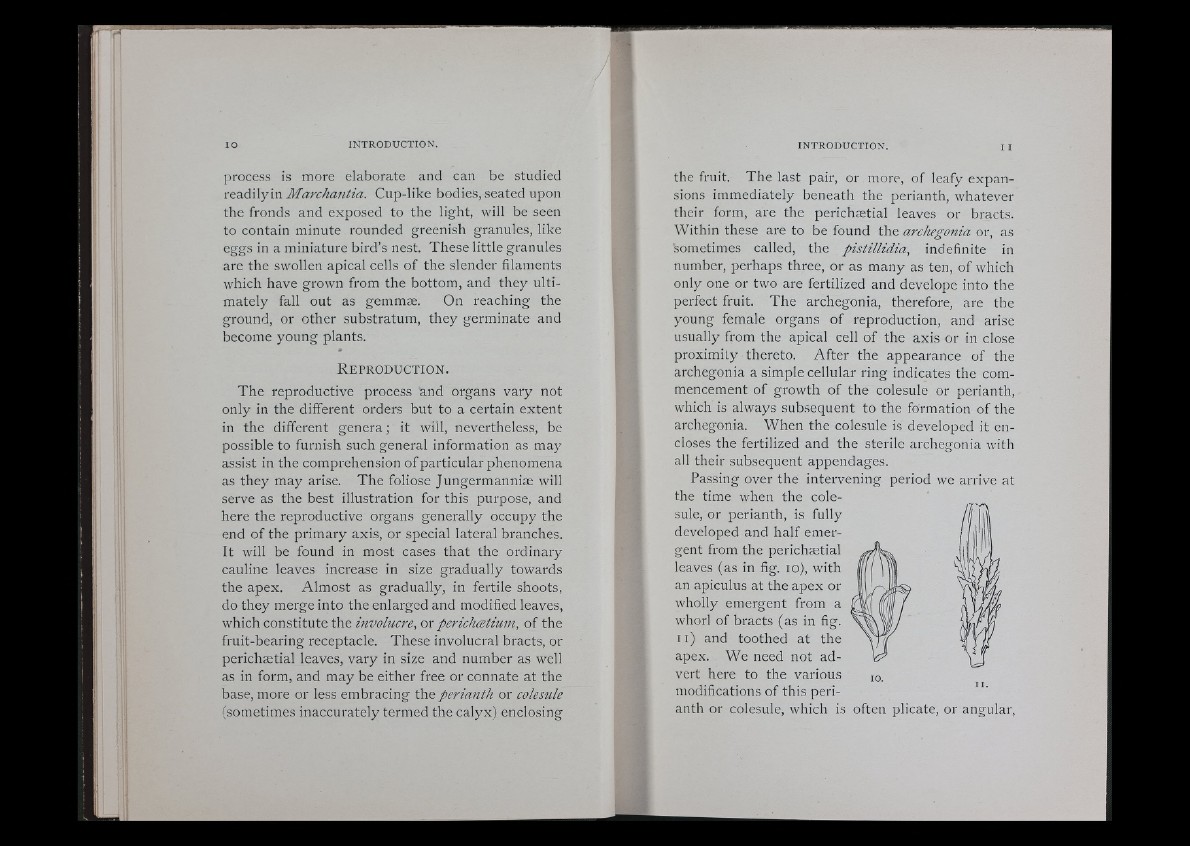
proce.ss is more elaborate and can be studied
Marchantía. Cup-like bodies, seated upon
the fronds and exposed to the light, will be seen
to contain minute rounded greenish granules, like
eggs in a miniature bird’s nest. These little granules
are the swollen apical cells of the slender filaments
which have grown from the bottom, and they ultimately
fall out as gemmiE. On reaching the
ground, or other substratum, they germinate and
become young plants.
*
R e p r o d u c t io n .
The reproductive process and organs vary not
only in the different orders but to a certain extent
in the different genera; it will, nevertheless, be
possible to furnish such general information as may
assist in the comprehension of particular phenomena
as they may arise. The foliose Jungermannim will
serve as the best illustration for this purpose, and
here the reproductive organs generally occupy the
end of the primary axis, or special lateral branches.
It will be found in most cases that the ordinary
cauline leaves increase in size gradually towards
the apex. Almost as gradually, in fertile shoots,
do they merge into the enlarged and modified leaves,
which constitute the involucre, ox perichcetium, of the
fruit-bearing receptacle. These involucral bracts, or
perichsetial leaves, vary in size and number as well
as in form, and may be either free or connate at the
base, more or less embracing perianth or colesule
(sometimes inaccurately termed the calyx) enclosing
the fruit. The last pair, or more, of leafy expansions
immediately beneath the perianth, whatever
their form, are the perichsetial leaves or bracts.
Within these are to be found the archegonia or, as
sometimes called, the pistillidia, indefinite in
number, perhaps three, or as many as ten, of which
only one or two are fertilized and develope into the
perfect fruit. The archegonia, therefore, are the
young female organs of reproduction, and arise
usually from the apical cell of the axis or in close
proximity thereto. After the appearance of the
archegonia a simple cellular ring indicates the commencement
of growth of the colesule or perianth,
which is always sub.sequent to the formation of the
archegonia. When the colesule is developed it encloses
the fertilized and the sterile archegonia with
all their subsequent appendages.
Passing over the intervening period we arrive at
the time when the cole-
sule, or perianth, is fully '
developed and half emergent
from the perichaetial
leaves (as in fig. lo), with
an apiculus at the apex or
wholly emergent from a
whorl of bracts (as in fig.
i i ) and toothed at the
apex. We need not advert
here to the various
modifications of this perianth
or colesule, which is often plicate, or angular.